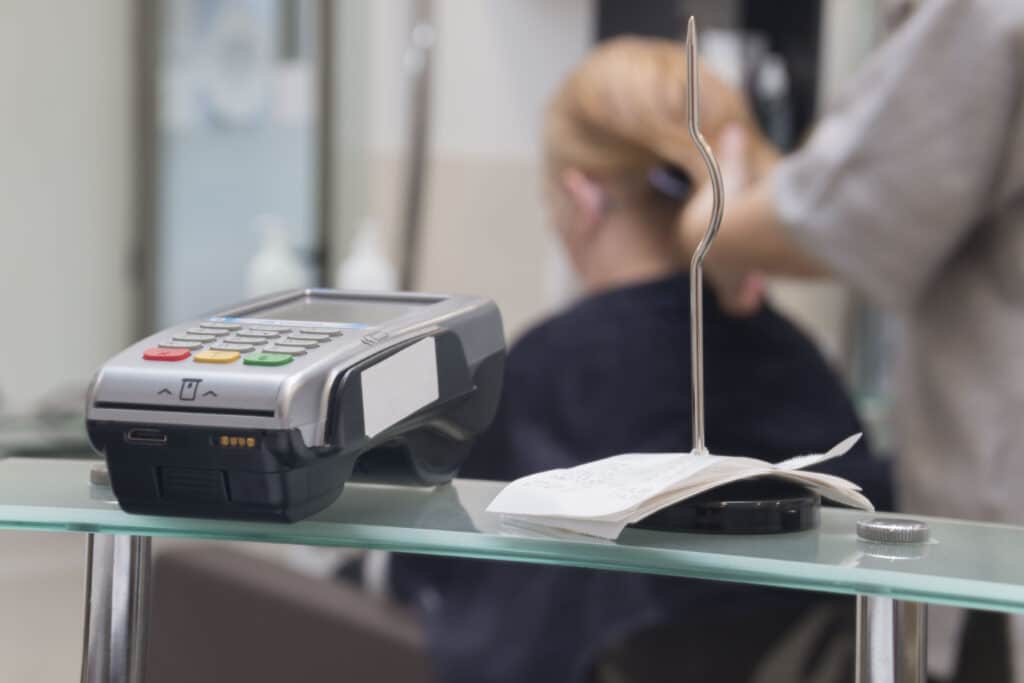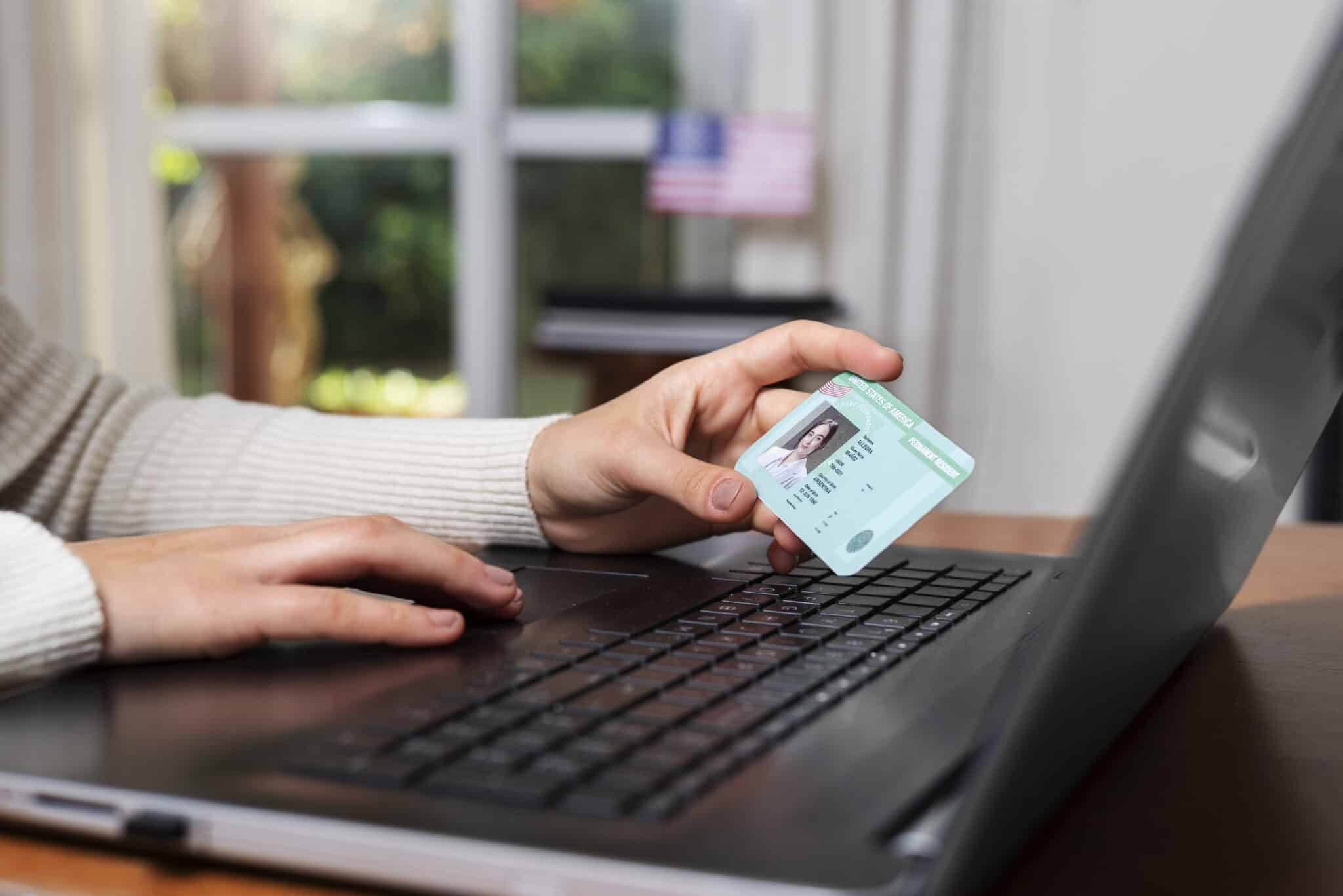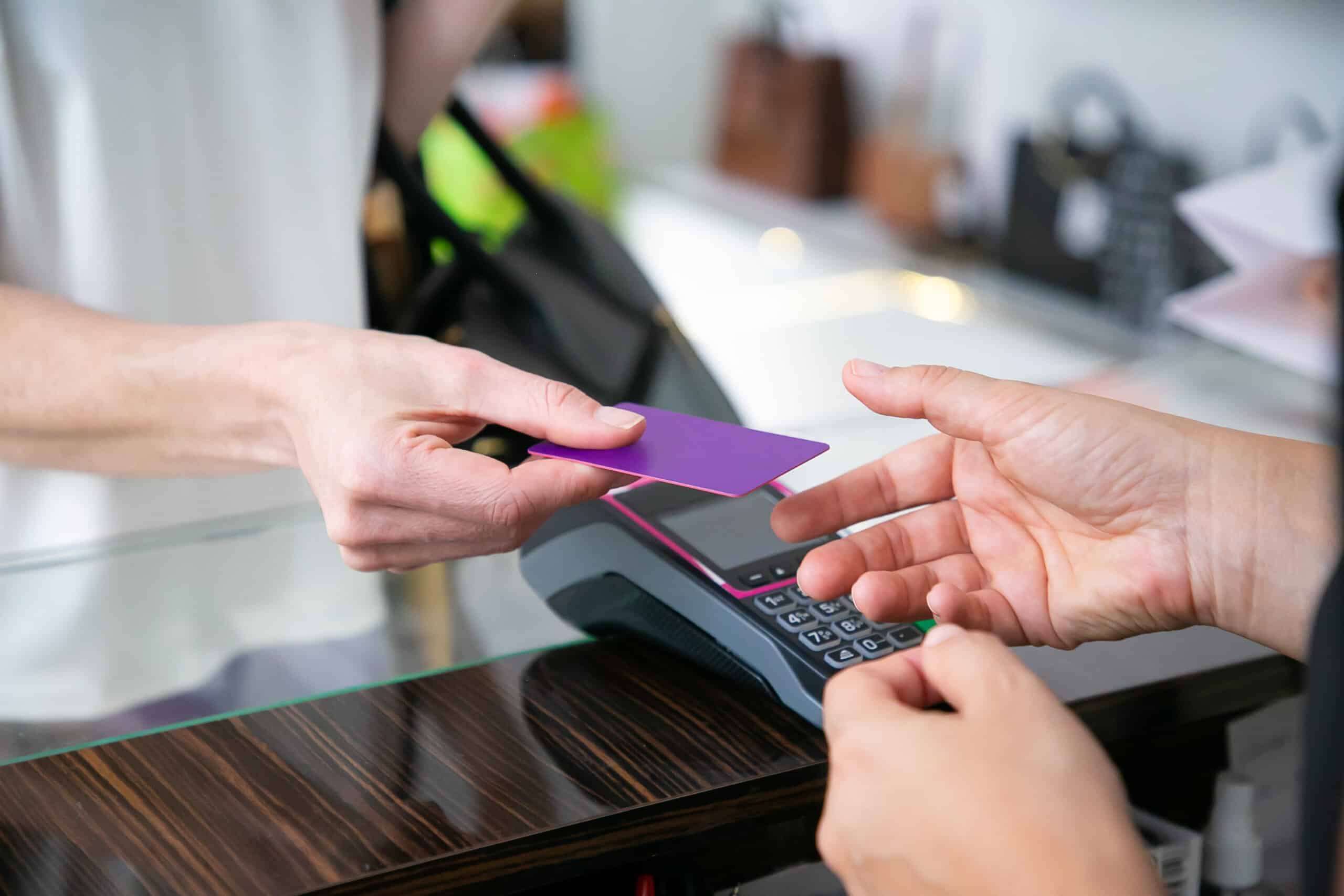The Evolution Of Payment Security Bank Identification Number Checker

In the current digital age, ensuring payment security holds significant importance. One important tool in combating fraud is the Bank Identification Number (BIN) checker. This article will delve into the importance of BIN checking in protecting online transactions, payment security & BIN checker, the advantages of utilizing a BIN checker, and the various types of BIN checkers accessible.
Additionally, we will address how businesses can integrate BIN checking for improved payment security and the future of payment security with technological advancements and the growing utilization of artificial intelligence.
Keep reading to gain insights into the progression of payment security and the essential role of BIN checking.
Why is BIN Checking Important for Payment Security?
BIN Checking is essential for ensuring payment security by verifying the Bank Identification Number (BIN) of credit cards during transactions. This process is crucial in preventing fraudulent activities and protecting sensitive payment information.
By comparing the BIN with the issuing bank’s database, BIN Checking enables merchants to validate the legitimacy of credit card transactions in real-time. This verification process provides an additional level of protection against unauthorized transactions, reducing the likelihood of chargebacks and financial losses.
In the current digital era, where online transactions are common, the precision and effectiveness of BIN Checking are vital for ensuring a smooth and secure payment experience for both consumers and businesses.
How Does BIN Checking Help Prevent Fraud?
BIN Checking helps in preventing fraud by verifying the authenticity of credit card details using Bank Identification Numbers (BINs) before processing transactions.
By incorporating BIN Checking, businesses can improve their fraud prevention tactics significantly. This procedure is essential for ensuring the safety and dependability of online transactions. By validating BIN details, suspicious activities can be promptly recognized and resolved, reducing the likelihood of fraudulent transactions. Incorporating BIN Checking into authentication processes allows organizations to establish a more secure environment for customers to complete transactions, resulting in enhanced trust and confidence in the security of their data and financial information.
What Are the Benefits of Using a BIN Checker?
The use of a BIN Checker offers benefits such as improved payment security, decreased chances of fraudulent behavior, and simplified transaction verification procedures.
Integrating a BIN Checker into the payment processing system allows businesses to guarantee secure transactions with instant verification, thus improving risk management procedures. This real-time verification feature facilitates prompt detection and prevention of potential fraudulent activities, ensuring the protection of both the business and its customers.
By following compliance regulations like PCI DSS through the implementation of a BIN Checker, organizations can showcase their dedication to maintaining secure payment environments and safeguarding sensitive financial data from unauthorized breaches.
The Evolution of Payment Security and the Need for BIN Checking
The importance of advanced techniques such as BIN Checking in safeguarding financial transactions in the digital era has been highlighted by the evolution of payment security mechanisms.
The progression of enhancing payment security measures can be traced back to the early days of financial transactions when basic methods like signatures were utilized for payment authentication. As technology advanced, more sophisticated methods like encryption and tokenization were introduced to secure sensitive data during online transactions. With the increase in cyber threats and fraudulent activities, the incorporation of innovative technologies such as biometrics has become essential to ensure secure payment processes. These advancements have not only enhanced transaction security but also increased consumer confidence in digital payment platforms.
What Were the Previous Methods of Payment Security?
In the past, payment security relied on basic methods like signature verification and manual card imprinting to authenticate transactions. These traditional approaches have shown to be inadequate in dealing with the complex cyber threats present in today’s digital environment.
Hackers have become more successful in circumventing signature checks and exploiting weaknesses in manual processing systems, resulting in an increase in data breaches and fraudulent activities. Therefore, the necessity for advanced security protocols and encryption techniques has become crucial to guarantee the safeguarding of sensitive financial information during transactions.
How Did BIN Checking Improve Payment Security?
BIN Checking has transformed payment security by implementing a more dependable and automated procedure to authenticate credit card details prior to authorizing transactions.
This groundbreaking approach is vital in reducing the likelihood of fraudulent behavior by cross-referencing the Bank Identification Number (BIN) with a repository of recognized card issuers. Through the validation of this critical data, BIN Checking not only secures financial transactions but also boosts customer confidence.
With its secure verification features, BIN Checking guarantees adherence to regulatory frameworks like the Payment Card Industry Data Security Standard (PCI DSS), establishing a superior level of data safeguarding within the payment processing sector.
What are the Different Types of BIN Checkers Available?
Different types of BIN Checkers are available, such as Online BIN Checkers, API-Based BIN Checkers, and Database BIN Checkers, each providing specific functionalities for validating credit card details.
Online BIN Checkers are tools accessible via the web that permit users to input a BIN number and promptly receive verification results. API-Based BIN Checkers allow smooth integration into current systems, offering real-time verification capabilities for e-commerce platforms. In contrast, Database BIN Checkers use pre-loaded databases to cross-reference BIN numbers with accurate card information. Businesses should evaluate their transaction volume and security requirements to determine the most suitable type of BIN Checker for their operations.
1. Online BIN Checkers
Web-based tools known as Online BIN Checkers quickly verify credit card BIN details in real-time, offering immediate validation for secure online transactions. These tools are vital in guaranteeing the secure execution of online payments, as they are specifically created to identify possible fraudulent activities by comparing the Bank Identification Number (BIN) with comprehensive databases.
By promptly verifying the legitimacy of the card in use, Online BIN Checkers play a significant role in upholding secure networks and thwarting unauthorized transactions. This proactive method not only protects sensitive data but also builds user trust by improving the overall security of payment gateways.
2. API-Based BIN Checkers
API-Based BIN Checkers provide seamless integration with payment processing systems, enabling businesses to automate BIN verification processes and improve transaction security. By utilizing API-based BIN Checkers, companies can reduce manual intervention significantly, thus expediting transaction processing and reducing errors. These advanced tools are compatible with various payment gateways and platforms, making them versatile and straightforward to implement.
API-based BIN Checkers are essential in ensuring compliance with security protocols and standards like PCI DSS, protecting sensitive payment data, and preventing fraudulent activities. Their capacity to streamline transaction verification processes makes them a valuable asset for businesses seeking to enhance efficiency and security in their payment operations.
3. Database BIN Checkers
Database BIN Checkers rely on comprehensive repositories of BIN information to validate credit card details, providing a reliable solution for businesses in need of accurate and efficient BIN checking services. By utilizing extensive BIN databases, these tools help minimize manual errors and guarantee transaction precision. Their capability to cross-check BIN numbers with current data assists in promptly verifying the authenticity of credit card transactions.
Database BIN Checkers also make significant contributions to fraud prevention and compliance efforts by identifying suspicious activities and ensuring compliance with industry regulations. This streamlined process not only boosts the security of online transactions but also enhances overall operational efficiency for businesses in diverse sectors.
How Can Businesses Implement BIN Checking for Payment Security?
Businesses have the option to utilize BIN Checking to enhance payment security through various methods, such as integrating with payment processors, setting up in-house BIN checking systems, or outsourcing to third-party BIN Checkers.
Integrating BIN verification seamlessly into payment processes requires an understanding of the business’s specific needs and selecting the most suitable approach. By integrating BIN checking into their payment systems, businesses can identify and prevent fraudulent transactions, reduce chargebacks, and provide smoother payment processing experiences for their customers. Choosing the appropriate BIN Checker solution is essential to ensure accurate and efficient verification of card information, which ultimately helps in reducing risks associated with online transactions and safeguarding sensitive customer data.
1. Integration with Payment Processors
Integrating BIN Checking with payment processors allows businesses to validate credit card details in real-time, ensuring secure and authenticated transactions for customers.
This integration improves risk management by enabling businesses to quickly identify and prevent fraudulent activities. By incorporating secure solutions like Secure Authentication through BIN Checking, companies can enhance customer trust and loyalty. Real-time validation guarantees that transactions are handled efficiently and accurately, ultimately enhancing the overall payment processing experience. The collaboration between BIN checking and payment processors offers a smooth and dependable method to verify card information, decreasing the likelihood of errors or discrepancies during financial transactions.
2. In-house BIN Checking Systems
The development of in-house BIN Checking systems enables businesses to customize their verification processes and retain complete control over the security of their payment transactions. These systems offer businesses flexibility by enabling them to adjust security measures to meet their specific requirements and preferences.
In-house BIN Checking systems allow companies to easily conform to evolving regulatory requirements and industry standards, ensuring compliance. The team can smoothly incorporate system updates, ensuring alignment with the most recent security protocols and offering improved protection against fraudulent activities.
3. Outsourcing to Third-Party BIN Checkers
The practice of outsourcing BIN Checking to third-party service providers presents businesses with a convenient and cost-effective solution for dependable credit card verification and fraud prevention. By delegating BIN checking to specialized third-party providers, companies can take advantage of expert validation services and sophisticated fraud detection techniques.
This method not only aids in lowering operational costs but also guarantees that transactions are secure and compliant with industry standards. It is vital for businesses to select reputable vendors for such services to safeguard sensitive financial information and uphold trust with customers.
By partnering with the appropriate service provider for secure transaction processing, businesses can streamline their payment authentication processes and concentrate on core operations.
What is the Future of Payment Security and BIN Checking?
Technological innovations, increased integration of artificial intelligence, and the global adoption of BIN verification practices are expected to drive significant advancements in the future of payment security and BIN Checking.
As we anticipate the future, it is clear that emerging technologies such as machine learning and biometrics will have crucial roles in enhancing transactional security measures. Machine learning algorithms have the capacity to analyze extensive data sets to identify patterns that may indicate fraudulent activities, thereby strengthening overall payment security. Similarly, biometric authentication methods like fingerprint scanning and facial recognition provide additional layers of security, ensuring that only authorized users can conduct transactions. The global trend towards standardized BIN checking procedures reflects a collective endeavor to establish secure payment processing frameworks on an international scale.
1. Advancements in Technology
Technological advancements are transforming payment security measures, with encryption, biometrics, and machine learning playing key roles in strengthening transaction security and preventing fraud.
The combination of secure network architecture and technological innovation has brought about a shift in protecting sensitive financial data. Increasingly, organizations are utilizing biometric authentication methods, such as fingerprints or facial recognition, to add an extra layer of security. They are also employing predictive analytics to identify and stop fraudulent activities in real-time, thus enhancing data protection measures.
As cyber threats become more advanced, the incorporation of these cutting-edge technologies is essential in combating sophisticated attacks and preserving the integrity of financial transactions.
2. Increased Use of Artificial Intelligence
The increased use of artificial intelligence algorithms in payment security systems is improving fraud detection capabilities and enabling real-time risk assessment for secure financial transactions.
This incorporation of AI technologies is vital for strengthening security measures against complex fraudulent activities. By consistently analyzing large volumes of transactional data, AI can rapidly detect patterns and anomalies that could signal potential risks. Real-time risk assessment driven by AI enables prompt reactions to suspicious behavior, mitigating potential financial losses. In the continually changing cyber threat environment, AI acts as a valuable partner in remaining proactive against malicious actors and upholding the integrity of payment systems.
3. Global Adoption of BIN Checking
The widespread implementation of BIN Checking practices is promoting standardized verification procedures among financial institutions and payment platforms, fostering uniform security protocols and compliance standards on a global level.
Additionally, by integrating BIN Checking worldwide, organizations can improve their capacity to identify and thwart fraudulent behaviors, thereby protecting sensitive consumer data and mitigating financial risks. Moreover, the adoption of BIN Checking helps companies streamline transaction operations, reduce errors, and enhance overall efficiency. This proactive strategy not only enhances customer confidence and loyalty but also conforms with regulatory standards, fostering a more secure and compliant financial environment.
Frequently Asked Questions
What is the Bank Identification Number Checker?
The Bank Identification Number Checker is a tool used to validate the authenticity and security of payment card transactions. It identifies the bank that issued the card, the card type, and the country of origin.
How does the Bank Identification Number Checker work?
The Bank Identification Number Checker uses a database of BIN numbers and associated information to validate payment card transactions. Additionally, it compares the first six digits of the card number, known as the BIN, with the information in the database to verify the card’s authenticity.
What is the purpose of the Bank Identification Number Checker?
The Bank Identification Number Checker was created to increase payment security and prevent fraud. It allows merchants and financial institutions to verify the validity of payment card transactions, reducing the risk of unauthorized charges and chargebacks.
How has the Bank Identification Number Checker evolved over time?
The Bank Identification Number Checker has evolved to keep up with advancements in technology and changing security threats. So, it now includes additional information such as card brand, card level, and card scheme, and can detect the use of virtual credit cards and other new payment methods.
Is the Bank Identification Number Checker used globally?
Yes, the Bank Identification Number Checker is used globally and is the standard method for validating payment card transactions. Also, it is recognized by all major credit card networks and is used by merchants and financial institutions around the world.
Is the Bank Identification Number Checker 100% accurate?
While the Bank Identification Number Checker is a valuable tool for payment security, it is not 100% accurate. Additionally, the database may not always be up-to-date, and some fraudsters may use valid BIN numbers. It should be used in conjunction with other security measures for maximum protection against fraud.



